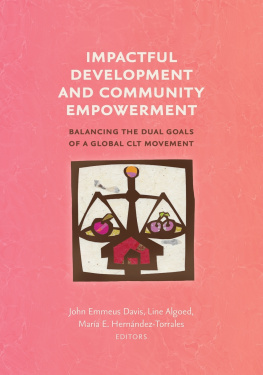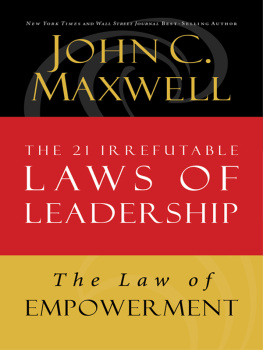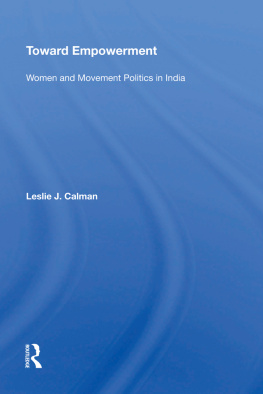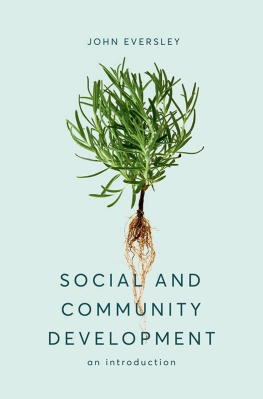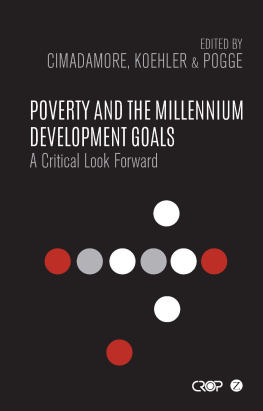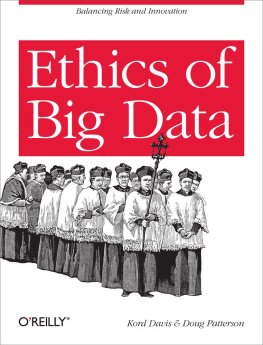John Emmeus Davis - Impactful Development and Community Empowerment: Balancing the Dual Goals of a Global CLT Movement
Here you can read online John Emmeus Davis - Impactful Development and Community Empowerment: Balancing the Dual Goals of a Global CLT Movement full text of the book (entire story) in english for free. Download pdf and epub, get meaning, cover and reviews about this ebook. year: 2021, publisher: Terra Nostra Press, genre: Politics. Description of the work, (preface) as well as reviews are available. Best literature library LitArk.com created for fans of good reading and offers a wide selection of genres:
Romance novel
Science fiction
Adventure
Detective
Science
History
Home and family
Prose
Art
Politics
Computer
Non-fiction
Religion
Business
Children
Humor
Choose a favorite category and find really read worthwhile books. Enjoy immersion in the world of imagination, feel the emotions of the characters or learn something new for yourself, make an fascinating discovery.
- Book:Impactful Development and Community Empowerment: Balancing the Dual Goals of a Global CLT Movement
- Author:
- Publisher:Terra Nostra Press
- Genre:
- Year:2021
- Rating:5 / 5
- Favourites:Add to favourites
- Your mark:
- 100
- 1
- 2
- 3
- 4
- 5
Impactful Development and Community Empowerment: Balancing the Dual Goals of a Global CLT Movement: summary, description and annotation
We offer to read an annotation, description, summary or preface (depends on what the author of the book "Impactful Development and Community Empowerment: Balancing the Dual Goals of a Global CLT Movement" wrote himself). If you haven't found the necessary information about the book — write in the comments, we will try to find it.
Impactful Development and Community Empowerment: Balancing the Dual Goals of a Global CLT Movement — read online for free the complete book (whole text) full work
Below is the text of the book, divided by pages. System saving the place of the last page read, allows you to conveniently read the book "Impactful Development and Community Empowerment: Balancing the Dual Goals of a Global CLT Movement" online for free, without having to search again every time where you left off. Put a bookmark, and you can go to the page where you finished reading at any time.
Font size:
Interval:
Bookmark:
DEVELOPMENT
AND COMMUNITY
EMPOWERMENTA Common Ground Monograph


3146 Buena Vista Street
Madison, Wisconsin, USA 53704
Series: Common Ground Monographs
Description: Includes bibliographical references. | Madison, WI: Terra Nostra Press, 2021.
Identifiers: Library of Congress Control Number: 2021901598
ISBN: 978-1-7344030-9-1 (paperback) | ISBN: 978-1-7362759-0-0 (ebook)
Subjects: LCSH Land trusts. | Land tenure. | Land use. | Land use, Urban. | Nature conservation. | Landscape protection. | Sustainable development. | Economic developmentEnvironmental aspects. | City planningEnvironmental aspects. | Community development. | Urban ecology (Sociology) | BISAC POLITICAL SCIENCE / Public Policy / City Planning & Urban Development | LAW / Housing & Urban Development | BUSINESS & ECONOMICS / Development / Sustainable Development | SOCIAL SCIENCE / Sociology / Urban
Classification: LCC KF736.L3 W49 2020 | DDC 333.2dc23
Community Development

and Mara E. Hernndez-Torrales
Font size:
Interval:
Bookmark:
Similar books «Impactful Development and Community Empowerment: Balancing the Dual Goals of a Global CLT Movement»
Look at similar books to Impactful Development and Community Empowerment: Balancing the Dual Goals of a Global CLT Movement. We have selected literature similar in name and meaning in the hope of providing readers with more options to find new, interesting, not yet read works.
Discussion, reviews of the book Impactful Development and Community Empowerment: Balancing the Dual Goals of a Global CLT Movement and just readers' own opinions. Leave your comments, write what you think about the work, its meaning or the main characters. Specify what exactly you liked and what you didn't like, and why you think so.

